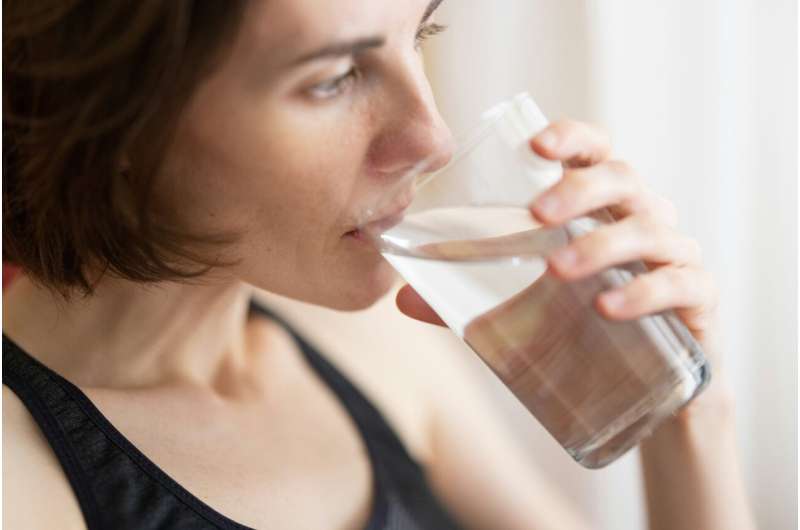Forever chemicals are in our drinking water—here's how to reduce them

of so-called forever chemicals in drinking water have left people worried about tap and bottled water. But recent research has shown there are ways to significantly reduce the levels of these harmful chemicals in our water.
(PFAS) are a wide range of synthetic chemicals that are used in many everyday products such as cosmetics, fabrics and food packaging (where they are used to make products resistant to water and grease), as well as in fire-fighting foams.
Unusually in the chemical universe, the structures of PFAS include groups of atoms within the same molecule that imbue them with both water-hating and water-loving properties. They are also resistant to degradation.
While this latter characteristic can improve the quality of the products we buy, it also means it is nearly impossible to break these chemicals down once they escape into the environment. Some PFAS chemicals are are also toxic. For example, perfluorooctanoic acid (PFOA) has been , and has been found to to common childhood vaccines.
PFAS can penetrate human skin and have been found in our , , and even in .
Concerns about their safety has led numerous jurisdictions on levels of some PFAS in drinking water. Nevertheless, many news stories have reported on research finding dangerous levels of PFAS chemicals in drinking water sources in England.
With this in mind, my colleagues and I in 41 samples of tap water from the West Midlands of the UK and 14 samples from Shenzhen, China. We also measured the same PFAS in 112 samples of bottled water.
We sampled 87 different brands from 15 countries that we bought either from shops or online in the UK and China. The PFAS we tested included many of those regulated in drinking water as well as some others we have found previously in .
We compared concentrations of PFAS in plastic and glass bottled water, as well as in sparkling versus still water. In neither case did we find significant differences in concentrations of PFAS. In contrast, however, in China we found significantly higher concentrations of PFAS in natural mineral water than in bottled purified water.
Crucially, while we found PFAS in every sample analyzed, the set recently by the US Environmental Protection Agency (USEPA) for some PFAS were only exceeded for PFOA in some samples of tap water from Shenzhen.
Concentrations of PFAS were lower in bottled water than in tap water from the same locality. This finding is in line with studies conducted in other countries like .
It may be reassuring to some extent, but our study only examined a relatively small number of tap water samples from two municipalities and cannot be taken as representative of the UK or China overall. There is no room for complacency as the for two of the PFAS we measured are zero.
So, taking note of the lower concentrations we saw in bottled purified water, we examined the effectiveness of boiling and filtration using activated carbon jug filters.
Boiling in a regular kettle reduced concentrations of all ten of the PFAS we tested. The level of reduction varied between different PFAS though. For PFOA and the three other PFAS that we measured for which there are USEPA concentration limits, concentrations were reduced by 11%–14% but were much greater (61%–86%) for the more volatile and non-regulated PFAS we examined that are more easily evaporated.
Reductions were greater for all the PFAS we tested (81%–96%) when we passed the water through an activated carbon jug filter. Boiling the water after activated carbon filtration, as sometimes happens in China, reduced concentrations a little further to between 81 and 99.6%.
These results suggest that using a jug water filter can substantially reduce concentrations of some regulated PFAS in our tap water. Boiling water before drinking also reduces PFAS concentrations but is less effective.
Our findings add to those of , which suggested that using a filter fitted to the kitchen tap reduced concentrations of 75 PFAS in tap water.
Our findings are a small first step towards reducing our exposure to PFAS. But we should not lose sight of the need to reduce and eliminate such forever chemicals. There's still a lot we don't understand about these chemicals, but what we've learned so far shows that some of them present an urgent threat to the health of both humans and wildlife.
Provided by The Conversation
This article is republished from under a Creative Commons license. Read the .![]()



















